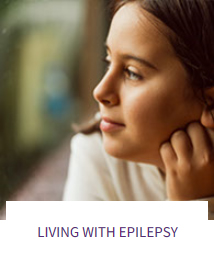Photosensitive Seizures
 Approximately 5% of people with epilepsy have an increased sensitivity to flickering light or quickly changing light patterns. During photic stimulation their EEG shows an epileptic response. In some people a single light flash is sufficient, in others series of light flashes of a certain frequency are necessary to cause this abnormal response. Clearly the degree of sensitivity differs greatly between people.
Approximately 5% of people with epilepsy have an increased sensitivity to flickering light or quickly changing light patterns. During photic stimulation their EEG shows an epileptic response. In some people a single light flash is sufficient, in others series of light flashes of a certain frequency are necessary to cause this abnormal response. Clearly the degree of sensitivity differs greatly between people.
Increased light sensitivity runs often in families. Sensitive people may experience seizures during video games, during a night club visit with strobe lights, when driving along a row of trees on a sunny day, or when sunlight gets reflected by water or filtered by venetian blinds.
Thanks to technical regulations we see fewer seizures triggered by TV commercials and movies. Questions have been raised about the intensity of the flashing lights on emergency vehicles, especially at night or close by. The authorities argue that good visibility is essential. Light sensitive people have to take their precautions (see below).
Photosensitive epilepsy is more common in children and adolescents, especially those with generalized epilepsy and syndromes like Juvenile Myoclonic Epilepsy (JME) and epilepsy with eyelid myoclonia (Jeavon’s syndrome).
Which precautions do I take, when flashing lights bother me?
- Cover one eye and turn away from the light source
- Watch TV in a well-lit room, turn the contrast down, reduce screen brightness
- Sit far back from the screen
- Use the remote control to change channels
- Maintain at least a 2 feet distance from video games
- Cover one eye while playing
- Don’t play longer than one hour
- Consider flicker-free computer monitor and non-glare glasses
- Avoid strobe lights, including visual fire alarm lights, flash rates of 2 Hertz/second recommended.
If you suspect increased photosensitivity, see your doctor or neurologist and ask to book an EEG. Explain to the EEG technologist to be careful during photic stimulation and do extra photic stimulation if increased sensitivity does not appear to be present.
If your photosensitivity clearly interferes with your daily activities you should see an optometrist and ask for a pair of Z1 Blue Glasses. They were developed by the company Zeiss. They reduce the photosensitivity very significantly. All other sun or dark glasses are not effective, the Z1 glasses remove the harmful frequencies from the light. If you wear glasses you can order Clip-on Z1 Blue glasses. Indoor use is not satisfactory for everyone, because the environment gets too dark.
This article was shared by Dr. Starreveld, who is a Director of the EEA.
Literary sources consulted to create this article include:
- Photosensitivity and Seizures, Epilepsy Foundation of America, epilepsy.com
- Binnie CD, Simple Reflex Epilepsies. In: Epilepsy a Comprehensive Textbook.
- Engel J, Pedley TA, Vol III, Chapter 239, pp 2489-2505, 1998. Lippincott-Raven, Philadelphia, New York
- Capovilla G, Gambardella A, Rubboli G, ea. Efficacy by a Commercially Available Blue Lens on PPR in 610 Photosensitive Epilepsy Patients. Epilepsia, 47(3): 529-533, 2006.

